Product pictures
| Amount Per 6 sticks, 102 g | |||
| Calories | 240 Kcal (1005 kJ) | ||
| Calories from fat | 108 Kcal | ||
| % Daily Value* | |||
| Total Fat | 12g | 18% | |
|---|---|---|---|
| Saturated Fat | 2g | 10% | |
| Cholesterol | 5mg | 2% | |
| Sodium | 320mg | 13% | |
| Total Carbs | 21g | 7% | |
| Sugars | 3g | 12% | |
| Dietary Fiber | 3g | 12% | |
| Protein | 11g | 22% | |
| Iron | 0.9mg | 5% | |
| Calcium | 20mg | 2% | |
* Percent Daily Values are based on a 2000 calorie diet. Your daily values may be higher or lower depending on your calorie needs.
Find out how many calories should you eat.
Ingredients And Nutrition Overview
Best
choice Good
choice Poor
choice Avoid
it!
choice Good
choice Poor
choice Avoid
it!
-
WeightWatchers Points: 5.2, PointsPlus: 6, SmartPoints: 7
WeightWatchers Points are estimated by carbohydrates, fats, protein and fiber in product. They are not an affirmation of better quality or nutritional value of the product or its manufacturer. Only way to count for dieters. Less points are better.
Read more at Weight watchers diet review -
Salty! Has over 13% of the daily sodium max
The average American consumes 5,000 mg of sodium daily — twice the recommended amount amount of 2400mg for healthy adults, this is 1 teaspoon of salt.
For medical reasons many people should not exceed 1500mg of sodium.
Surprisingly, you're responsible for only 15% of the sodium in your diet the bigger part - 75% of the sodium that you consume each day comes from processed foods, not home cooking or the salt shaker.
Excess sodium intake increases the risk of high blood pressure, hypernatremia, hypertension, cardiovascular disease and other heart problems.
Are these reasons enough to cut the sodium intake? No doubt! -
Convert Salt tsps to Sodium mg easily
Salt (NaCl) is not excactly sodium (Na).
It is not right to use these terms as synonyms.
The FDA recommended limit of sodium is 2,300 mg per day (or even less - about 1500 mg while one is on low sodium diets).
This is much less than the weight of salt.
(5,750 mg per day or 3,750 mg for low sodium diet) and not so convenient to calculate.
Know how much sodium is in your salt - without a calculator:
1/4 tsp salt = 600 mg sodium
1/2 tsp salt = 1200 mg sodium
3/4 tsp salt = 1800 mg sodium
1 tsp salt = 2300 mg sodium -
Great! Contains less than 1.5 tsp of sugar.
Great! Contains less than 1.5 tsp of sugar per serving!
-
Great source of fiber! More than 12% daily!
Eat more fiber. You've heard it many times. But why it is so good for your health?
Dietary fiber is best known for its ability to make our digestion going right.
So want to prevent or relieve constipation - eat more fiber!
There are also other great health benefits as well, such as lowering your risk of diabetes, heart disease and cancer, and helping to maintain a healthy weight by helping to feel you full longer.
The best source of fiber are fruits, vegetables, whole grains and legumes and not processed foods with added fiber. -
Controversial additive BHT present
BHT (butylated hydroxytoluene) is primarily used as an antioxidant food additive, mainly to prevent oils and fats in foods from oxidizing and becoming rancid.
It is GRAS in the US, but forbidden as food additive in Japan (since 1958), Romania, Sweden, and Australia.
Some studies have shown that it is carcinogenic.
Avoid it, there are foods available without this danger. -
Highly Processed!
This product is highly processed. If you'll take a look at its ingredient list, you'll discover new words to add to your vocabulary. Many of theses ingredients are required to increase the shelf life of the product and improve the flavor that disappears when food is not fresh.
-
Sodium Aluminum Phosphate
This product contains sodium aluminum phosphate. Food manufacturers will tell you that this additive is not a problem. And yes, normally, people will have some amount of aluminum in their body by means of inhalation, ingestion or dermal contact.The Department of Health and Human services says most this aluminum will leave your body quickly through feces, and the small amount that enters your bloodstream will leave via urine, but . . . they also say that excess aluminum can cause problems. Some research has implicated aluminum with Alzheimer's and research both supports and refutes this. Doctors blame aluminum of exacerbating the effects of kidney disease and causing bone or brain diseases.Bottom line: There's no tangible benefit of consuming products with sodium aluminum phosphate. To err on the side of safety, particularly with products you consume everyday, choose ones without added aluminum.
Allergens
Fish Allergy, Gluten Allergy, Wheat Allergy, Corn Allergy, Lactose Allergy, Milk Allergy, Soy Allergy, Sesame Allergy
Fish sticks Ingredients
Minced Pollock, Bleached Wheat Flour, Water, Wheat Flour, Modified Corn Starch, Salt, Sugar, White Corn Flour, Leavening (Sodium Bicarbonate, Sodium Aluminum Phosphate, Sodium Acid Pyrophosphate), Whey, Dextrose, Yeast, Nonfat Milk, Spice, Soybean Oil, Parfried in Vegetable Oil (Corn and/or Soybean and/or Canola Oil, with BHT).
You Might Also Like
% RDI of Main Nutrition Facts
12%
of RDI* (240 calories) 102 g
-
Cal: 12 %
-
Fat: 18.5 %
-
Carb: 7 %
-
Prot: 22 %
-
0%25%75%RDI norm*
Calories Breakdown
- Carbs (35.6%)
- Fat (45.8%)
- Protein (18.6%)
Get Your Recipe of Health!
Follow RecipeOfHealth on Facebook!

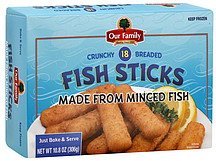
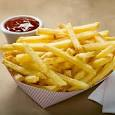
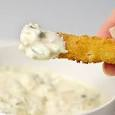
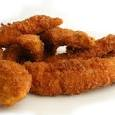
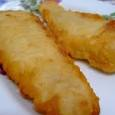
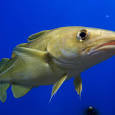
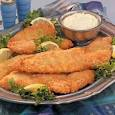
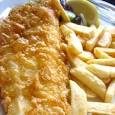
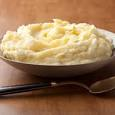
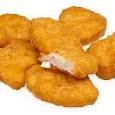
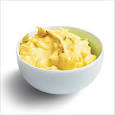
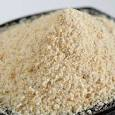
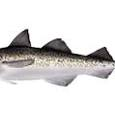
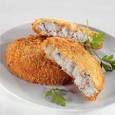

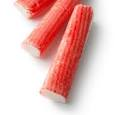
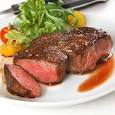
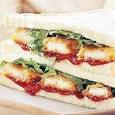
















Add your comment